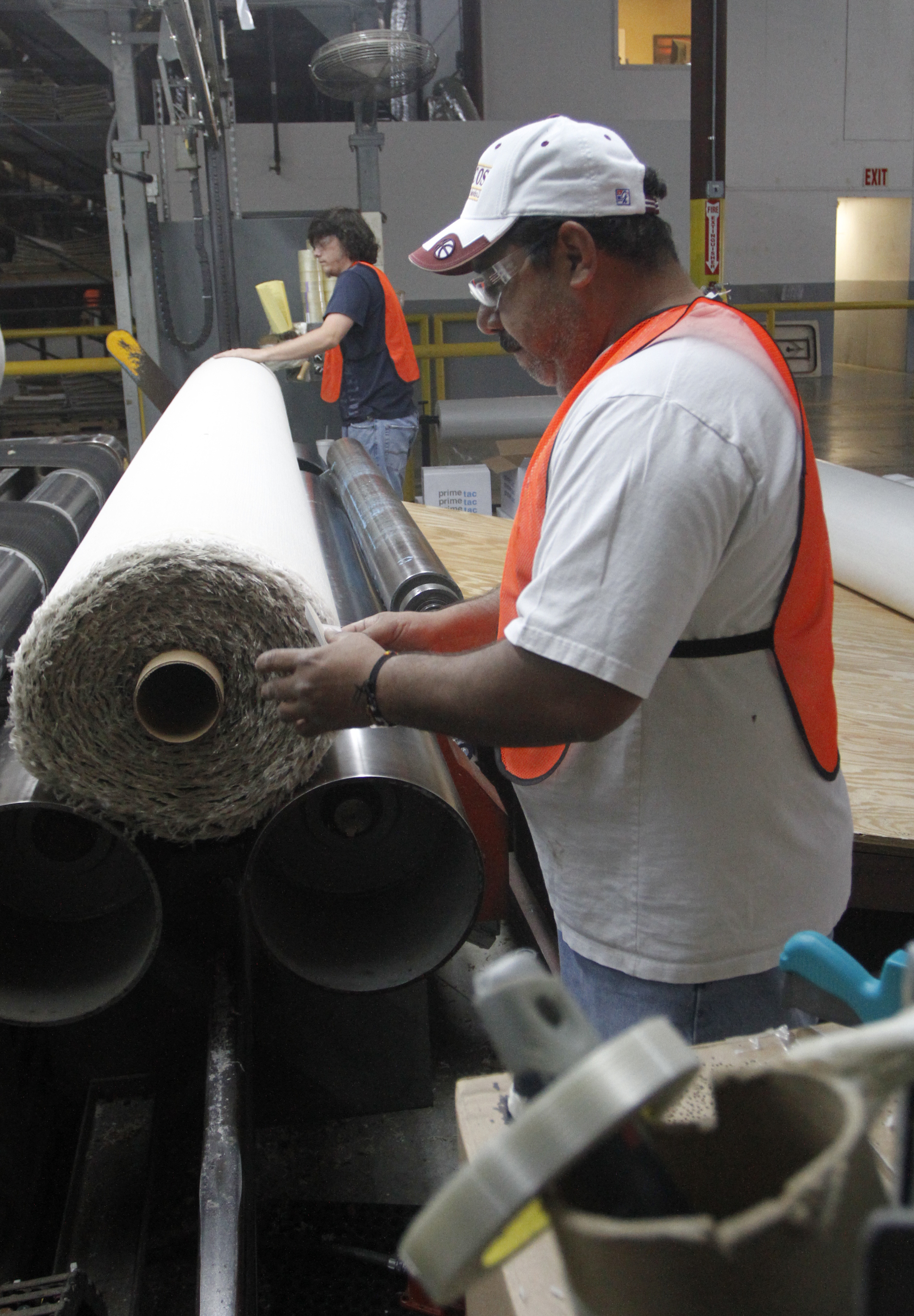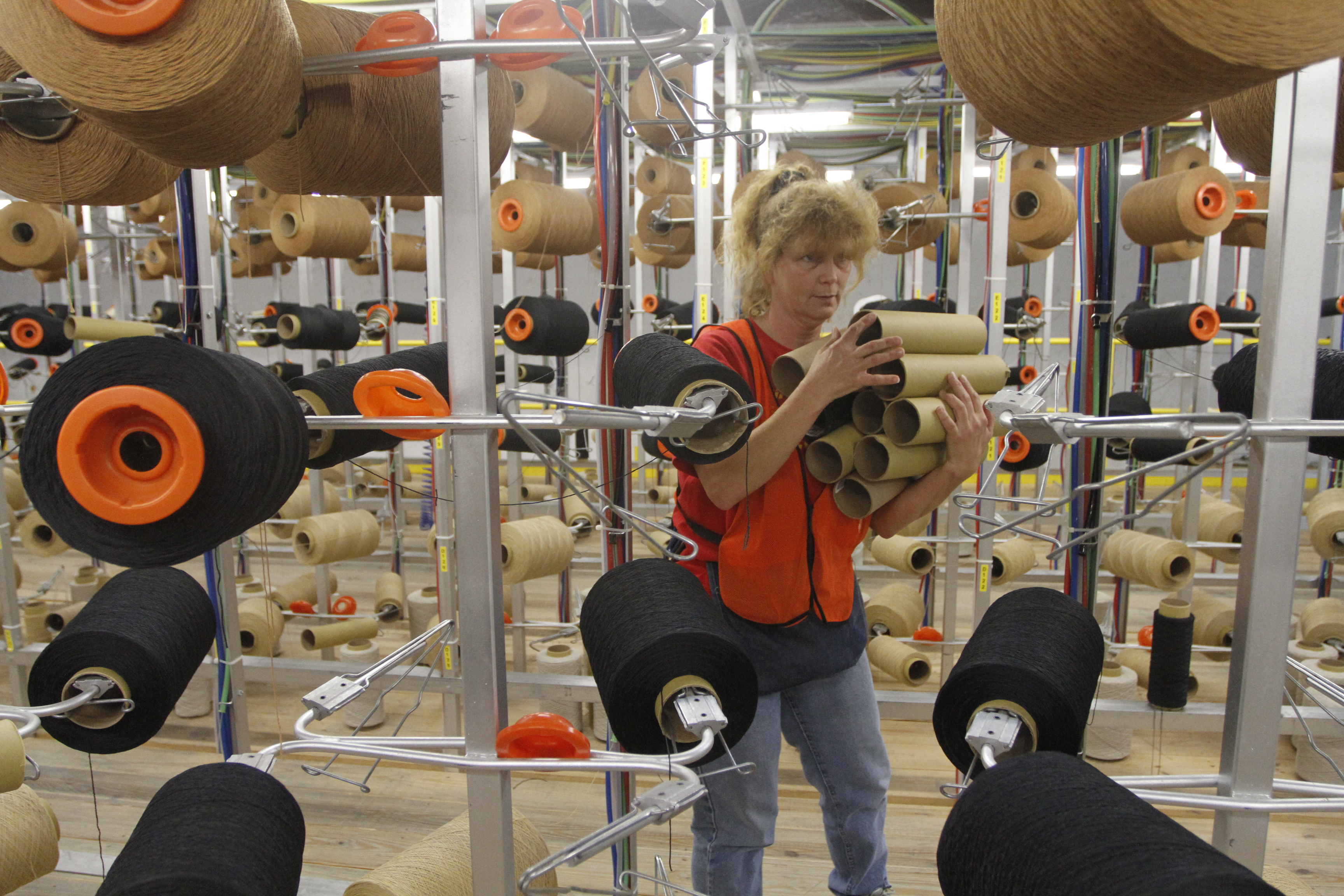Biggest carpet manufacturers
Based upon 2015 sales, the biggest carpet companies were:1. Shaw: $3.2 billion2. Mohawk: $2.65 billion3. Engineered Floors: $540 million4. Interface (tile carpet): $520 million5. Beaulieu: $504 million6. Dixie Group: $419 millionSource: Floor Focus. Carpet includes broadloom, modular tile and rugs and totaled $10.8 billion in 2015.
 Fernando Artiga, foreground, and Aaron Carpenter wrap up a piece of carpet for shipping on Friday morning. Workers at the Dixie Group carpet plant in Eton, Georgia, produced, inspected and shipped carpet on Friday. The plant has been surviving in the harsh economic times and Dixie CEO Dan Frierson believes the facility has a bright future ahead.
Fernando Artiga, foreground, and Aaron Carpenter wrap up a piece of carpet for shipping on Friday morning. Workers at the Dixie Group carpet plant in Eton, Georgia, produced, inspected and shipped carpet on Friday. The plant has been surviving in the harsh economic times and Dixie CEO Dan Frierson believes the facility has a bright future ahead.The Dixie Group Inc. more than doubled its losses last year after carpet sales fell 6 percent in 2016, but company CEO Dan Frierson expects better performance in 2017 as Dixie improves operations and expands its emerging hard surface business lines.
The Chattanooga-based carpet maker said Monday its operating losses last year more than doubled from the losses in 2015 to $5.2 million, or 33 cents per share, compared with a loss of $2.28 million, or 15 cents per share, in 2015.
For 2016, Dixie sales were down 5.9 percent to $397.5 million even with an extra week in the reporting period compared with the previous year. On a comparable 52-week basis, net sales for 2016 were down 7.2 percent from 2015.
"Despite this difficult year from a profit perspective, we have made several significant changes to improve our results in the future," Frierson said Monday.
Dixie has refinanced debt, restructured operations and recently introduced new hard surface floorcoverings and new carpet lines that should help the company regain its better-than-industry sales gains in the year ahead. Already in the first nine weeks of 2017, Frierson told analysts Monday that carpet sales are up 8 percent, with gains in both residential and commercial lines.
"Our business plan for 2017 anticipates returning to our history of outperforming the industry, residentially this will be driven by numerous new carpet products in rows," Frierson said. "The introduction of unique hard surface products along with outstanding service and quality as we have experienced in the past, our commercial business with greater emphasis on modular products should return to growth this year. We have a number of projects in process, which will continue to bring cost down and improve operations."
Frierson's assessment helped boost shares of Dixie on Monday by 5 cents a share, or 1.4 percent, to close Monday at $3.60 per share. But from its 2014 peak, Dixie shares have plunged 78 percent over the past three years.
Dixie and the carpet industry as a whole suffered a 40 percent drop in sales in 2009 from the housing slump. Since then, the industry has been growing 10 to 12 percent, but Frierson said Dixie sales have nearly doubled.
"It was based on a lot of beautiful new product, obviously servicing our customers well," Frierson said during a conference call Monday. "As we went through the restructuring two years ago, in particular we did have some service issues and quality issues. We feel those are behind this today, we are servicing our customers as well as ever and our quality is improved dramatically."
Frierson said higher prices adopted in late 2016 and the introduction of new products in the company's Fabrica, Atlas and Masland brands should also improve results this year.
"In the coming years, the housing market will be in the middle of two massive demographic waves, millennials and baby boomers, with both groups driving demand for at least the next decade," Frierson said. "This trend should provide steady growth in the floor covering market."
Contact Dave Flessner at dflessner@timesfreepress.com or at 423-757-6340.

